The #cairo IRC channel suggested (Thanks Company!) to use cairo_mask() instead of cairo_paint() to draw the gradient. That results in a squared instead of linear progression.
I did the following in lua. Sorry for the language, but it's easier to prototype something. This maps 1:1 to the C API and shouldn't be hard to translate:
cairo = require("lgi").cairo
s = cairo.ImageSurface(cairo.Format.ARGB32, 200, 100)
c = cairo.Context(s)
c:set_source_rgb(1, 1, 1)
c:paint()
p = cairo.Pattern.create_radial(50, 50, 0, 50, 50, 20)
p:add_color_stop_rgba(0, 0, 0, 0, 1)
p:add_color_stop_rgba(1, 0, 0, 0, 0)
c:save()
c:rectangle(0, 0, 100, 100)
c:clip()
c.source = p
c:paint()
c:restore()
p = cairo.Pattern.create_radial(50, 50, 2, 50, 50, 25)
p:add_color_stop_rgba(0, 0, 0, 0, 1)
p:add_color_stop_rgba(1, 0, 0, 0, 0)
c:translate(100, 0)
c:save()
c:rectangle(0, 0, 100, 100)
c:clip()
c.source = p
c:mask(p)
c:restore()
s:write_to_png("test.png")
To me, the second circle (The one that was cairo_mask()'d with a black source) looks a lot more like what you want:


